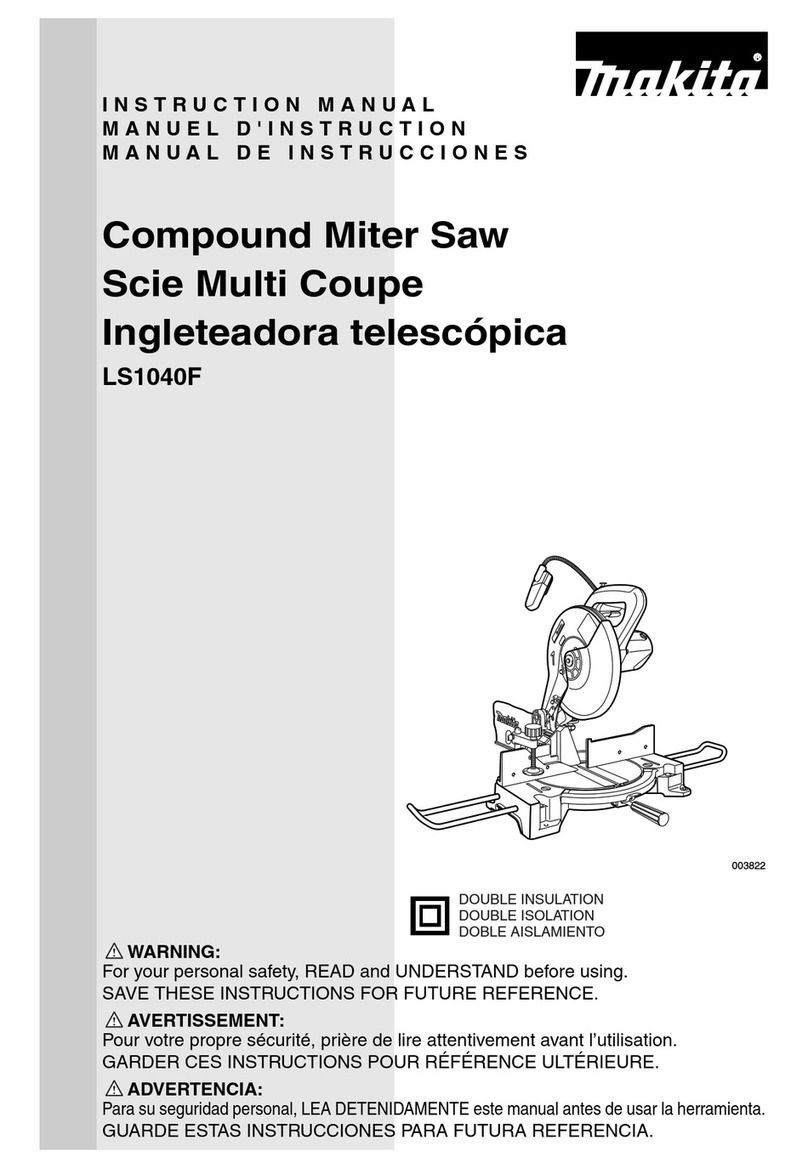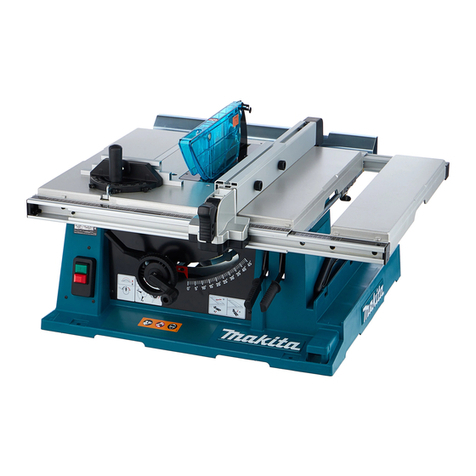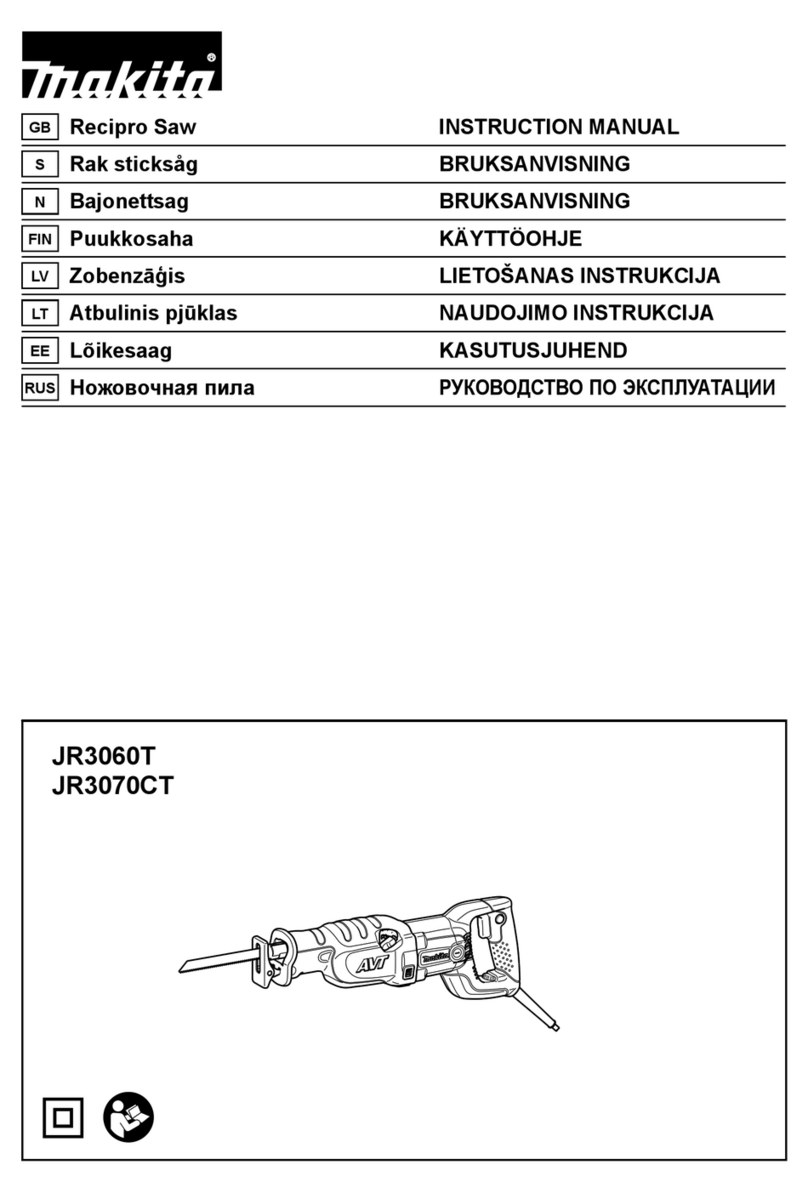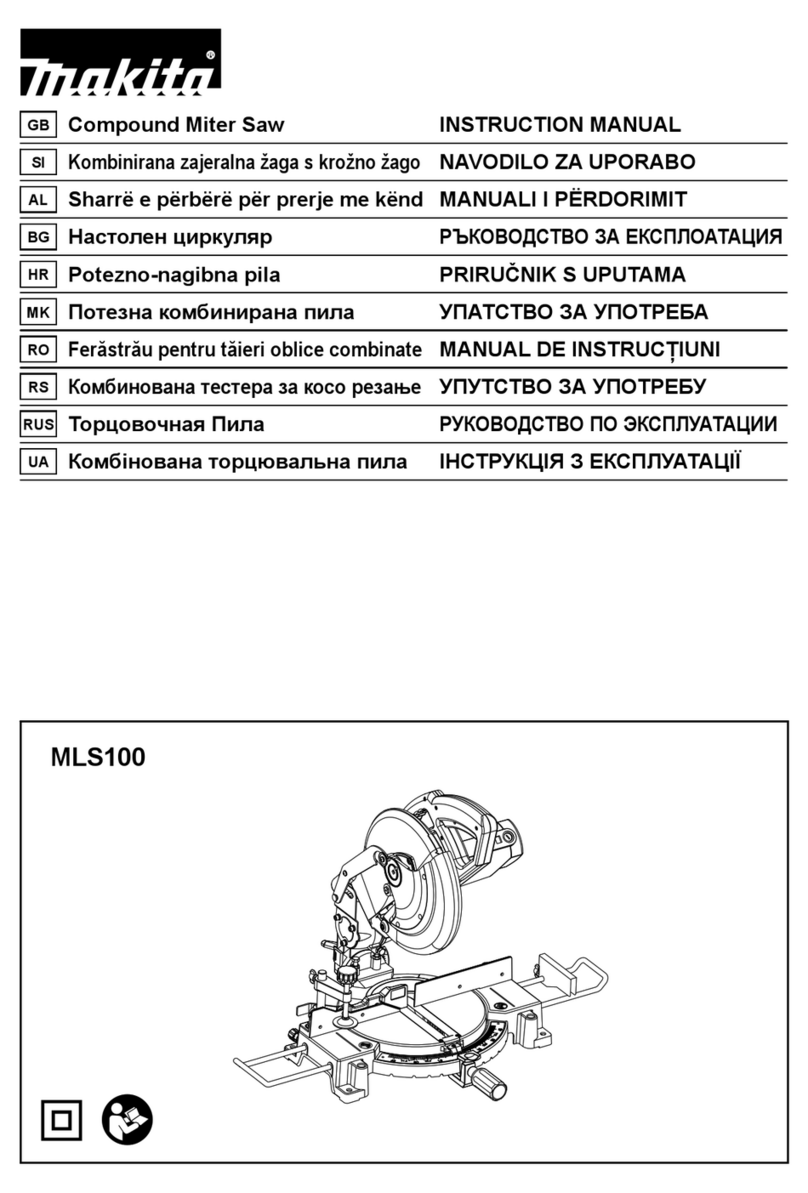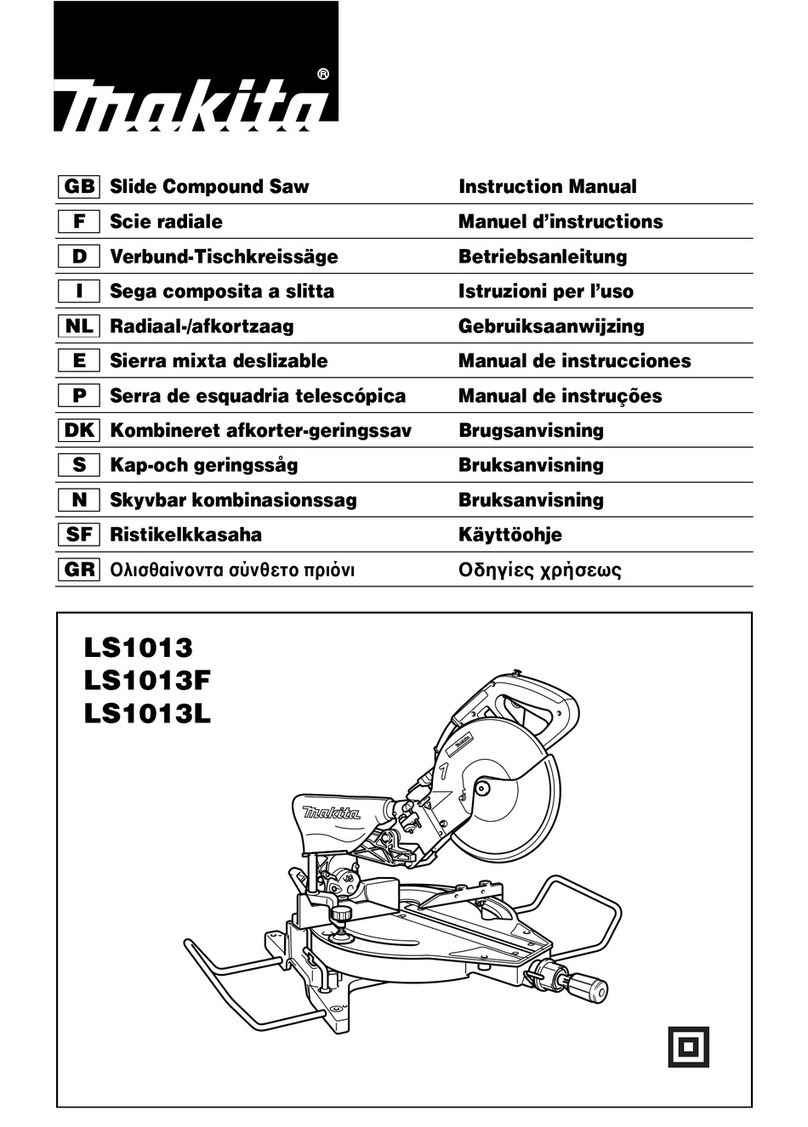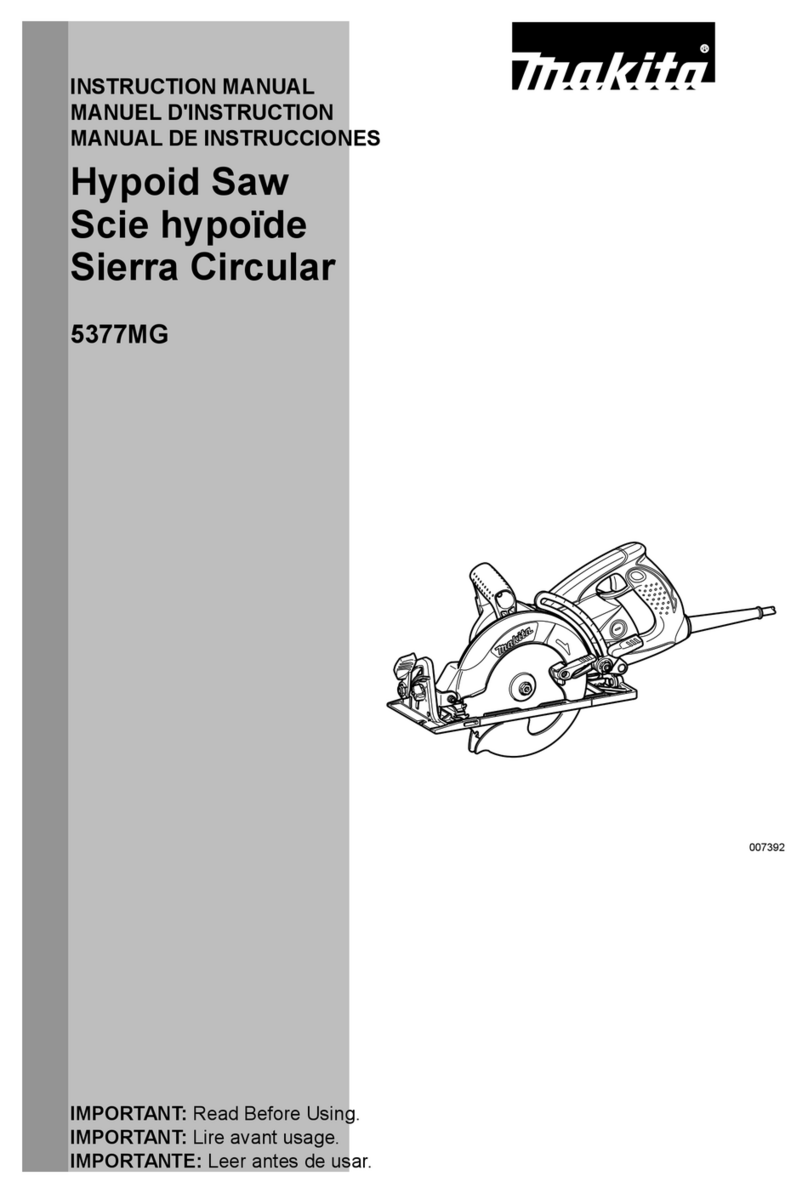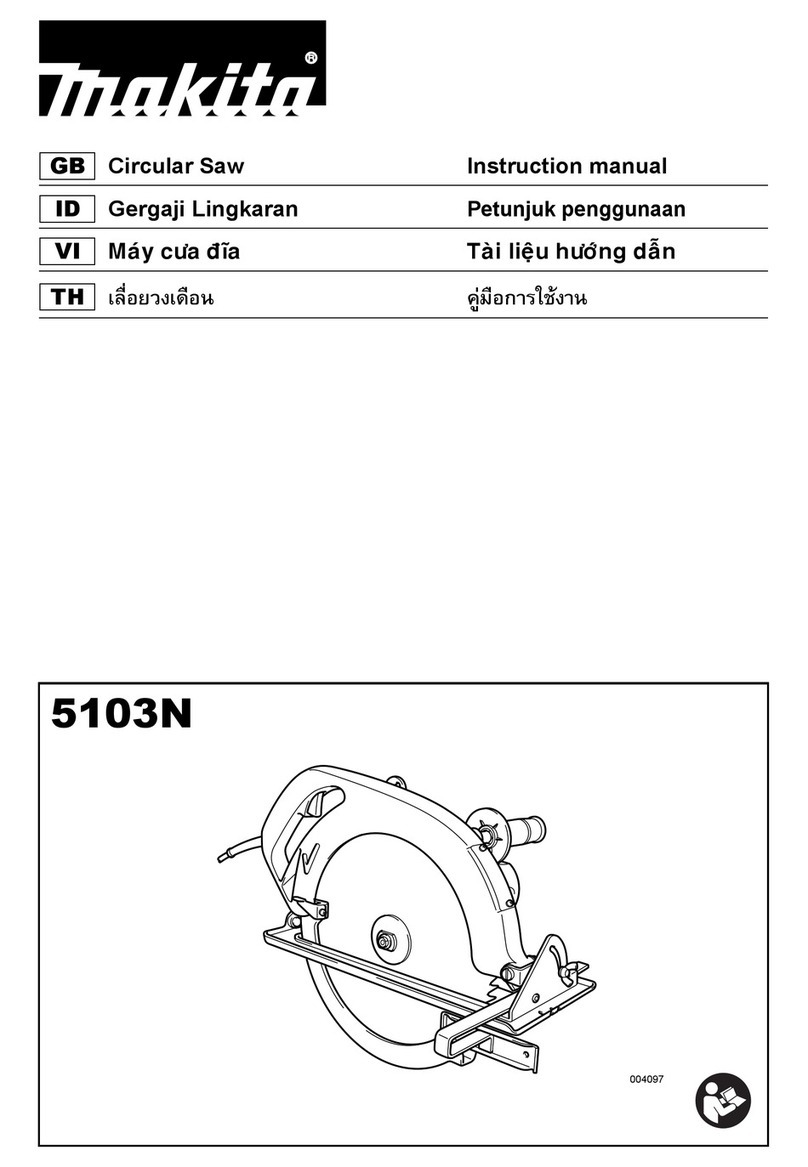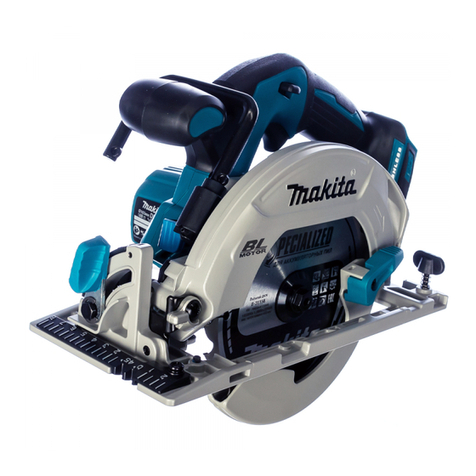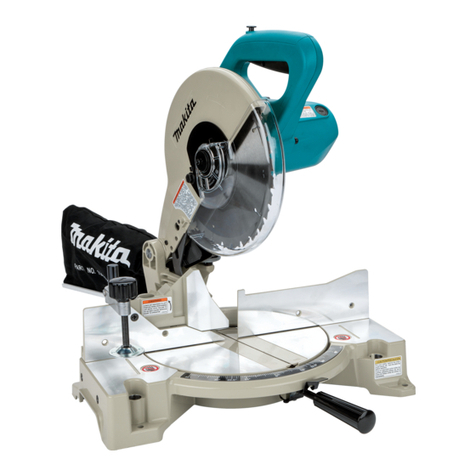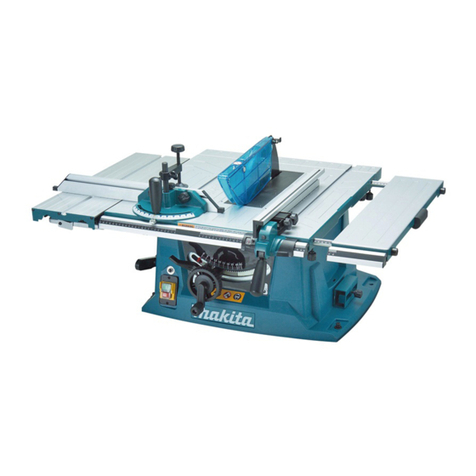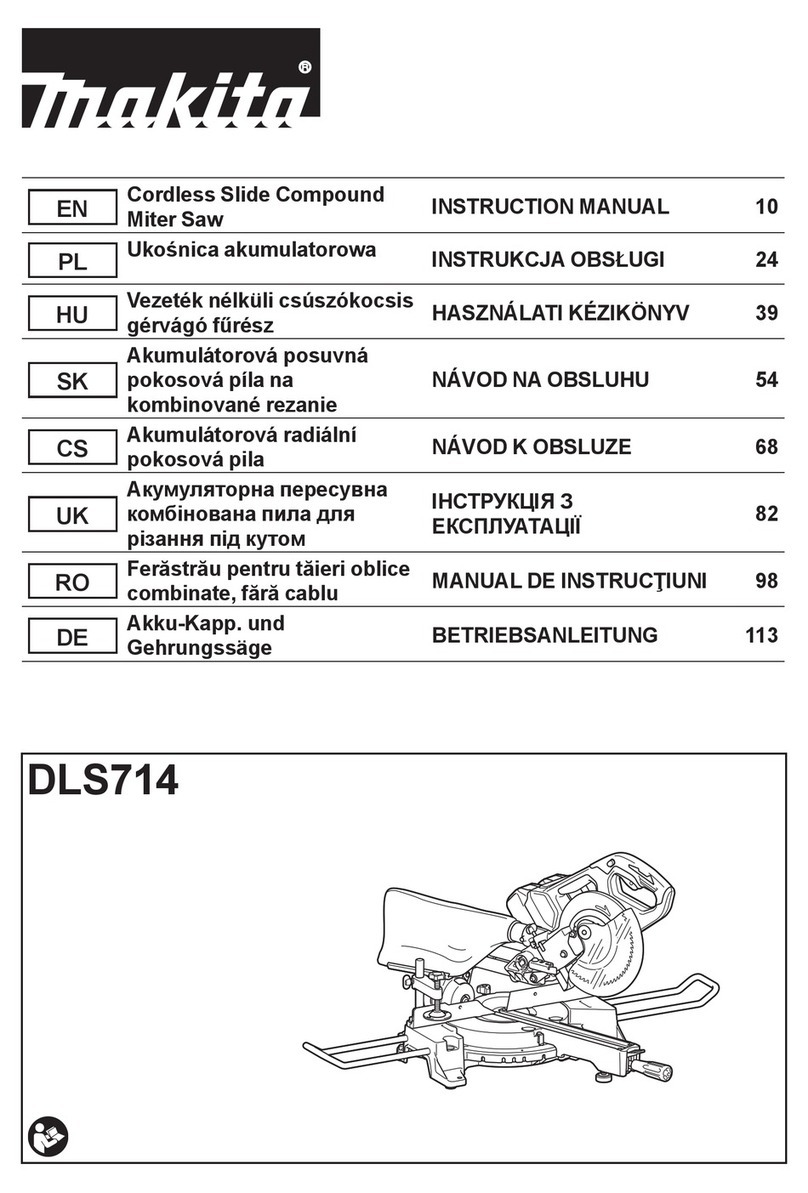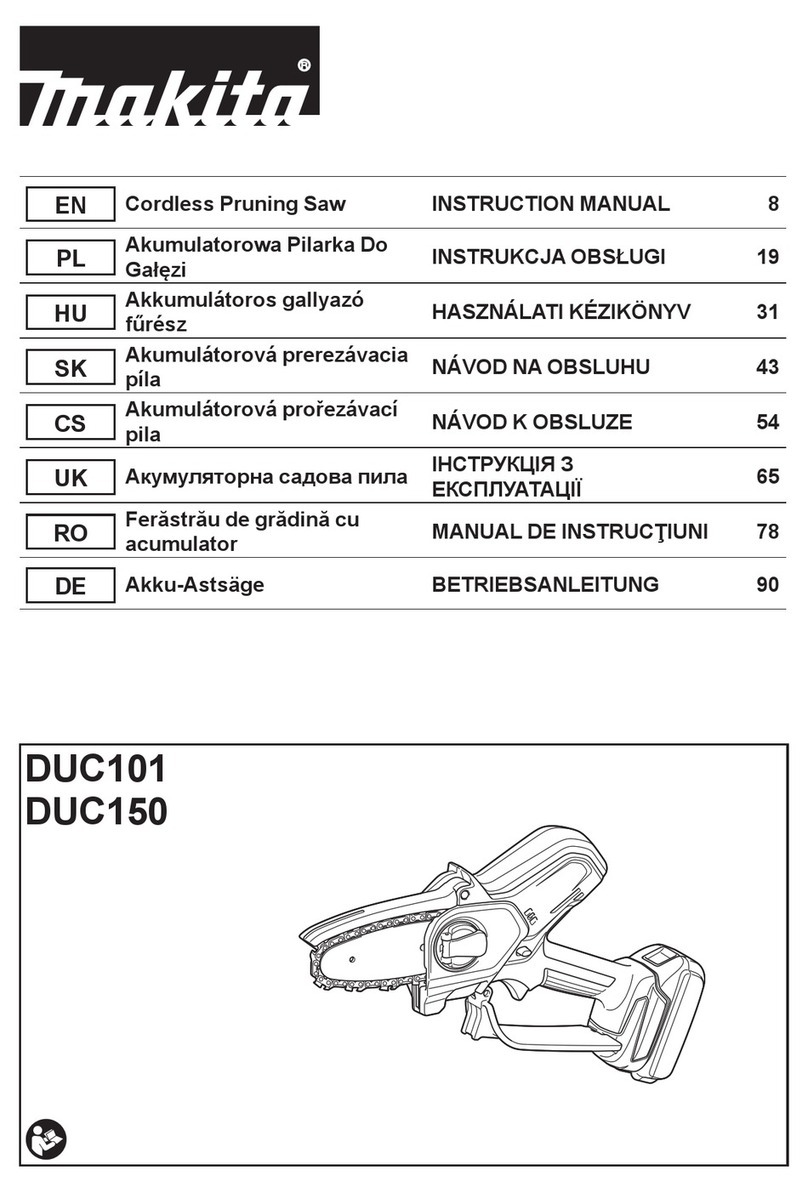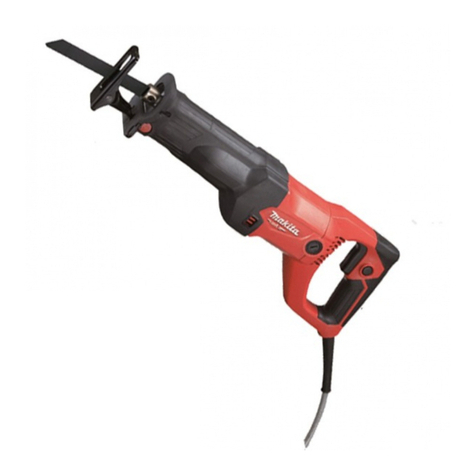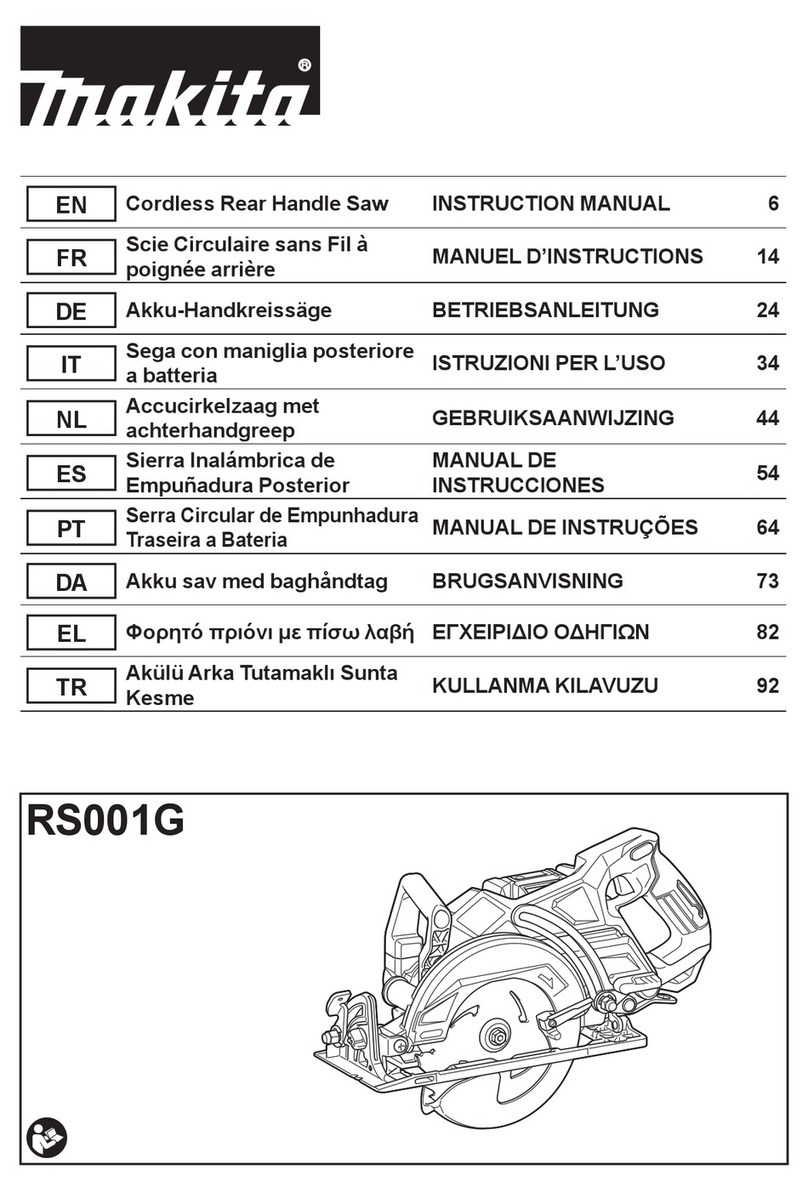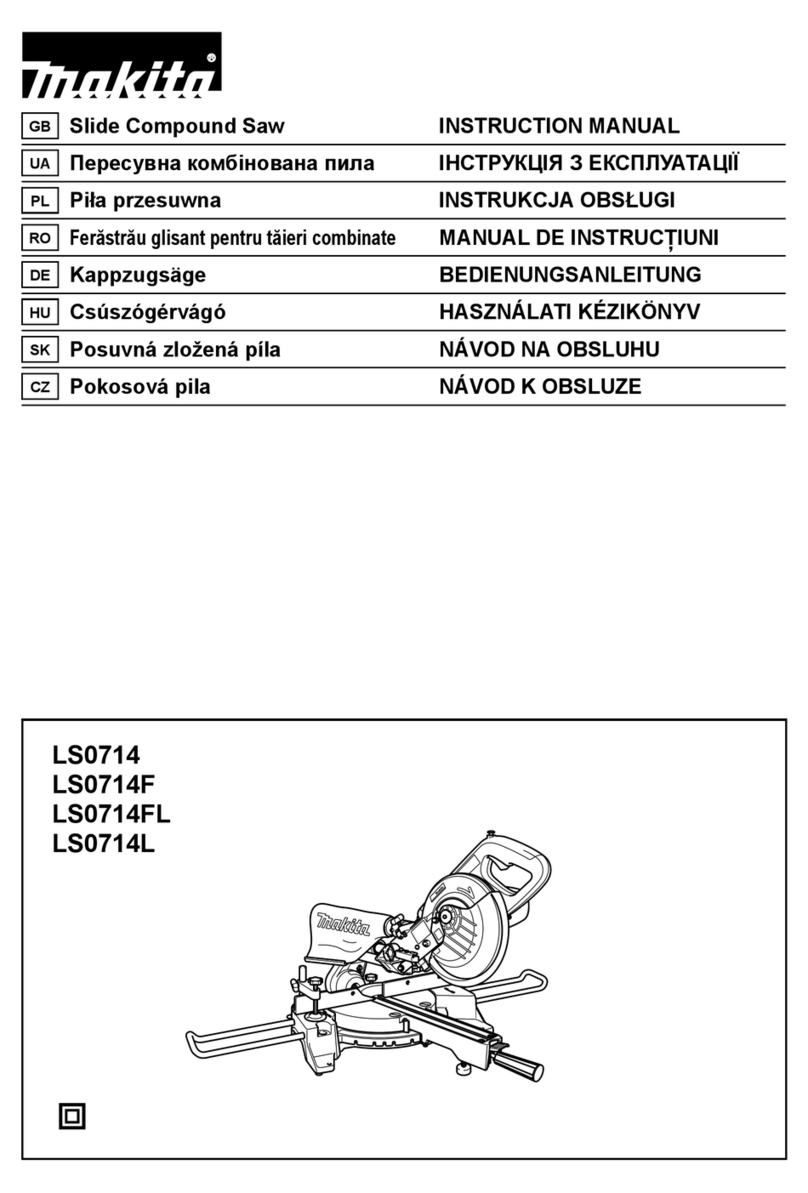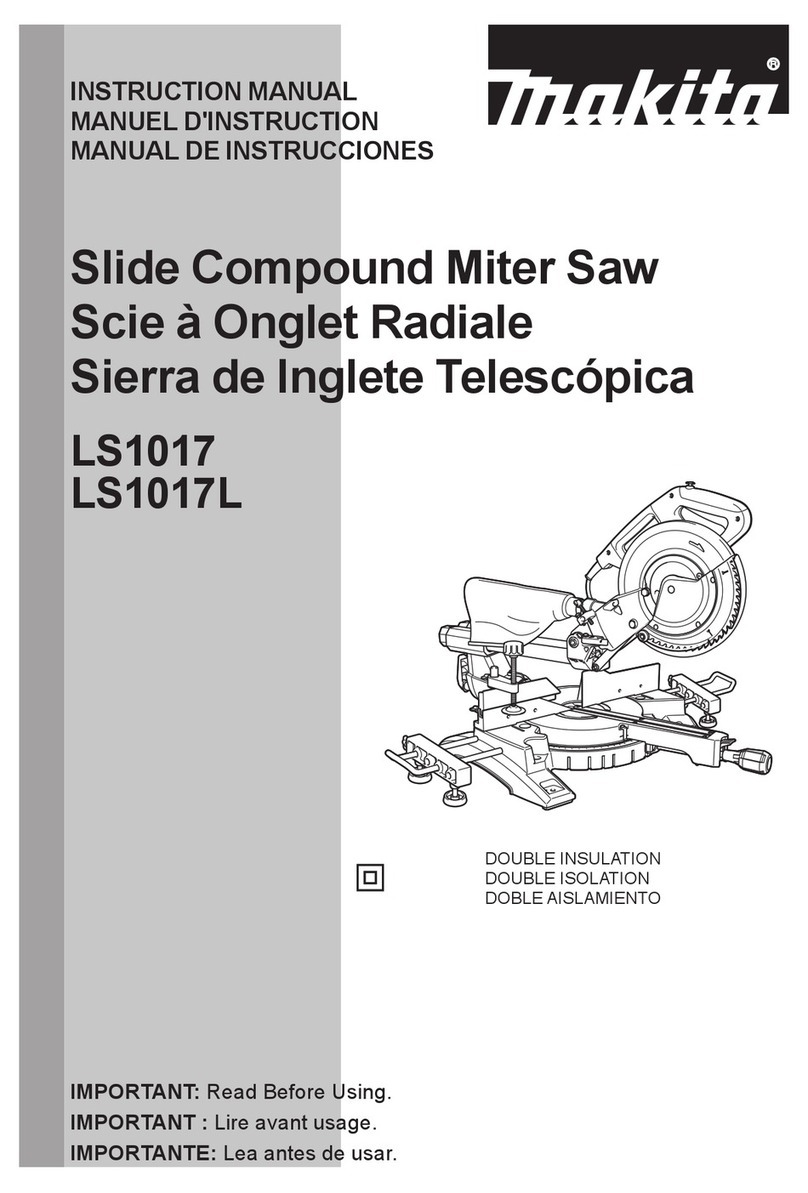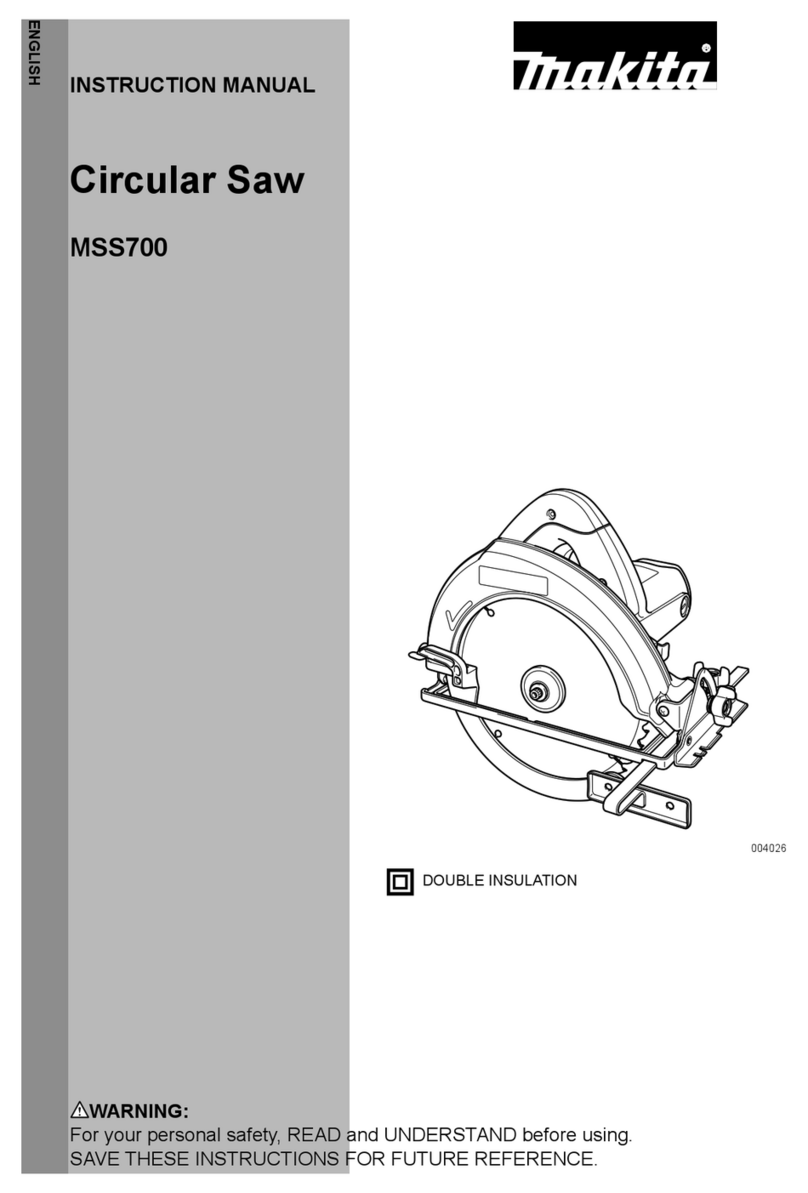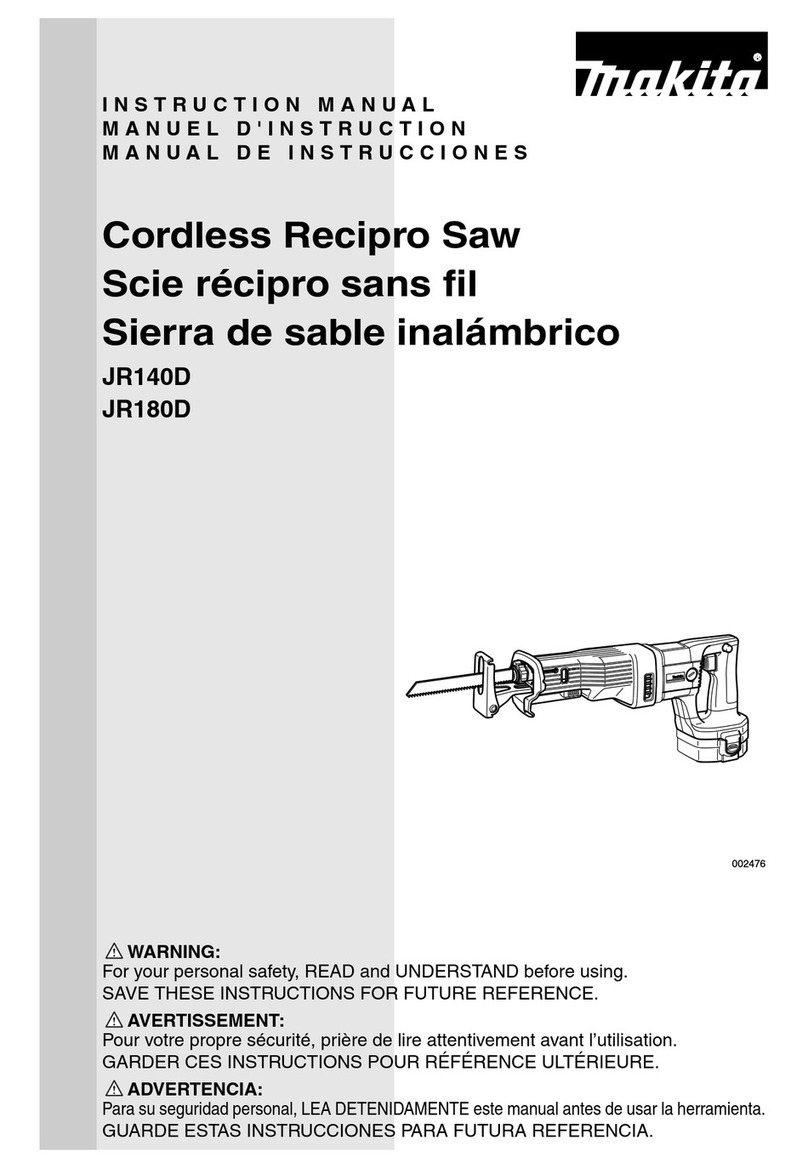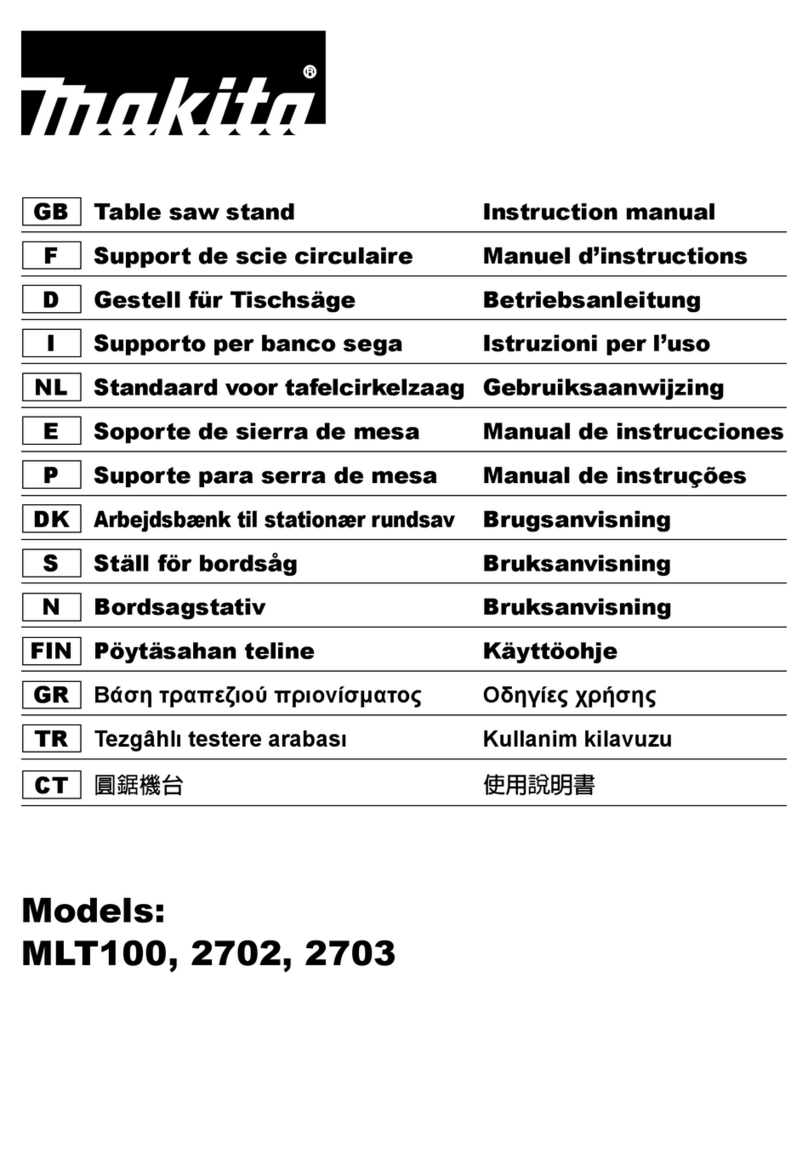
10 ENGLISH
ENGLISH (Original instructions)
SPECIFICATIONS
Model: LS1018 LS1018L
Blade diameter 255 - 260 mm
Hole diameter Countries other than Europe 25.4 mm or 30 mm
(country specic)
European countries 30 mm
Max. kerf thickness of the saw blade 3.2 mm
Max. miter angle Right 60°, Left 47°
Max. bevel angle Right 45°, Left 45°
No load speed (RPM) 4,300 min-1
Laser type -
Red Laser 650 nm, Maximum output
1 mW ( Laser Class 2M )
Dimensions (L x W x H) 825 mm x 536 mm x 633 mm
Net weight 21.5 kg
Safety class /II
• Due to our continuing program of research and development, the specications herein are subject to change
without notice.
• Specications may differ from country to country.
• Weight according to EPTA-Procedure 01/2014
Max. Cutting capacities (H x W) with 260 mm in diameter
Miter angle Bevel angle
45° (left) 0° 45° (right)
0° 50 mm x 310 mm 91 mm x 310 mm 31 mm x 310 mm
45° 50 mm x 220 mm 91 mm x 220 mm 31 mm x 220 mm
60° (right) -91 mm x 153 mm -
Symbols
The following show the symbols used for the equip-
ment. Be sure that you understand their meaning before
use.
Read instruction manual.
DOUBLE INSULATION
To avoid injury from ying debris, keep
holding the saw head down, after making
cuts, until the blade has come to a com-
plete stop.
When performing slide cut, rst pull car-
riage fully and press down handle, then
push carriage toward the guide fence.
Do not place hand or ngers close to the
blade.
Adjust sliding fences clear of blade and
blade guard properly.
Always remove SUB-FENCE R when
performing right bevel cuts. Failure to do so
may cause serious injury to operator.
LASER RADIATION: Do not stare into
beam. Direct laser beam may injure your
eyes.
Only for EU countries
Do not dispose of electric equipment
together with household waste material!
In observance of the European Directive,
on Waste Electric and Electronic
Equipment and its implementation in
accordance with national law, electric
equipment that have reached the end of
their life must be collected separately and
returned to an environmentally compatible
recycling facility.
Intended use
The tool is intended for accurate straight and miter
cutting in wood. With appropriate saw blades, aluminum
can also be sawed.
Power supply
The tool should be connected only to a power supply of
the same voltage as indicated on the nameplate, and
can only be operated on single-phase AC supply. They
are double-insulated and can, therefore, also be used
from sockets without earth wire.
